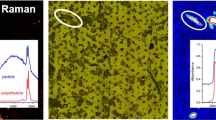Abstract
This study here is the result of a comparative study of the geomorphic features, grain size distribution, major mineral components, and micro-textures of sound-producing and soundless sands from three geoparks in north China, and discusses the possible causes of this naturally occurring, physical phenomenon. The sound-producing sand dunes we have investigated are situated along a curvilinear belt of deserts and experience variable precipitation–evaporation rates on a yearly basis. “Singing sands” occur mainly on barchan-type dunes and adjacent to lakes or springs, whereas soundless sands are mainly located in desert areas where there is no nearby surface or groundwater sources. We have analyzed samples from nine sound-producing and two soundless sand dunes using grain size, X-ray diffraction and fluorescence, and SEM analyses. All sand types are composed largely of quartz and feldspar, but sound-producing sands also contain secondary minerals such as kaolinite (3–5%), albite (2–6%), microcline (2–5%), and calcite (5%) that are lacking in the soundless sand samples. Sound-producing sands are generally fine-grained whereas soundless sands are coarse-grained, and all sand types are generally sub-rounded to rounded indicating long transport distance from their provenance. Sphericity values of both sand types are nearly identical with predominantly oblate shapes. Surface pitting is not a unique feature of either sand types, and hence can be ruled out as a major cause of the acoustic properties of sound-producing sands. Densely distributed dissolution features such as scale-like upturned plates and silica scales on grain surfaces contribute significantly to the sound emission of singing sands. Thus, the physical–climatic conditions in deserts such as the presence of surface water and groundwater and precipitation–evaporation rates, which collectively control the formation and distribution of dissolution features on sand surfaces, have a first-order control on the production of sound-producing sands.












Similar content being viewed by others
References
Andreotti B (2004) The song of dunes as a wave-particle mode locking, physic review. Letter 93(23):238001
Blake J (1874) On the structure of the sonorous sand from Kauai[J]. Proc Calif Acad Sci 5:357–358
Bolton HC (1889) Researches on sonorous sand in the peninsula of Sinai. Proceedings of the American Association for the Advancement of Science 38:137
Bonneau L, Andreotti B, Clément E (2007) Surface elastic waves in granular media under gravity and their relation to booming avalanches. Phys Rev E 75(1):016602
Carus-Wilson C (1891) The production of musical notes from non-musical sands. Nature 44:322
Igarashi C, Shikazono S (2003) Sound-producing sand in Japan: major element composition and its minerals determined by X-ray diffraction and X-ray fluorescence. (19): 1371–1374.
Douady S, Manning A, Hersen P (2006) Song of the dunes as a self-synchronized instrument [J]. Physics Review Letter 97): 018002.
Goldsack DR, Leach MF, Kilkenny C (1997) Natural and artificial singing sands. Nature 386:29
Haff PK (1986) Booming dunes. Am Sci 74:376
Humphries DW (1966) The booming sand of Korizo, Sahara, and the squeaking sand of Gower, S. Wales: a comparison of the fundamental characteristics of two musical sands. Sedimentology 6:135–152
Krinsley D, Wellendorf W (1980) Wind velocities determined from the surface texture of sand particles. Nature 283:372–373
Mahaney, W.C (2002) Atlas of sand grain surface textures and applications. Oxford University Press. Oxford. P.7
Mahaney WC, Stewart A, Kalm V (2001) Quantification of SEM microtextures useful in sedimentary environmental discrimination. Boreas 30:165–171
Ma Y (2000) Secret of sounding sand, sand sounding and resonator. Inner Mongolia Forestry Science &Technology 4:10–14 (in Chinese)
Nori F, Sholtz P, Bretz M (1997) Booming sand. Sci Am 277:84–89
Richardson W.D (1919) The singing sands of Lake Michigan. Science, 493~495.
Tian M, Yuan P, Guan Y et al (2006) The Characteristics and Scientific Value of Alxa Desert National Geopark of Inner Mogolia[IN]. The Preceedigns of the first International Geopark Development Seminar, 302–306
Qu J, Sun B, Zhang K et al (2007) The simulation experiment on the surface structure of singing sands and the resonance mechanism. Science China 37(7):949–956 (In Chinese)
Sholtz P, Bretz M, Nori F (1997) Sound-producing sand avalanches. Contemp Phys 38:329–342
Yuan, Peipei Tian, Mingzhong, Wu, Fadong (2006). The geo-relic types of the Alxa Desert Geopark of Inner Mongolia and its comprehensive evaluation//The 12th Assembly of Essay Collection of Geo-tourism, 44–48(in Chinese).
Acknowledgements
This study has been funded by a research grant from the National Natural Science Foundation of China (NSFC) [Project name: The Quatenary Garden: Geopark Science Popularization and Exploration; Grant no: 41320003] that we wish to acknowledge gratefully. Objective and insightful reviews by X and Y have helped us improve the organization and the science in the paper, and we express our sincere thanks to these referees. We are grateful to Professor XYZ for his/her editorial handling of our manuscript.
Author information
Authors and Affiliations
Corresponding author
Rights and permissions
About this article
Cite this article
Han, F., Tian, M., Wu, F. et al. Physical and chemical properties of sound-producing and soundless sand particles from booming sand dunes, northern China. Arab J Geosci 10, 241 (2017). https://doi.org/10.1007/s12517-017-3037-6
Received:
Accepted:
Published:
DOI: https://doi.org/10.1007/s12517-017-3037-6




